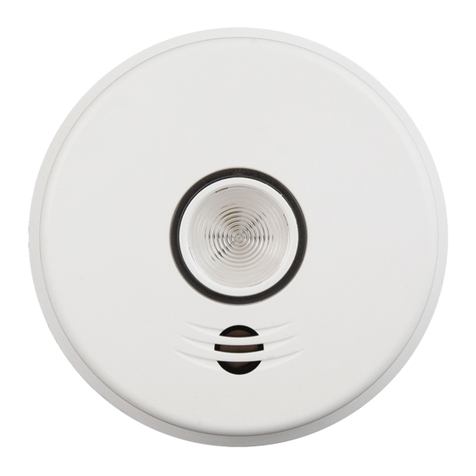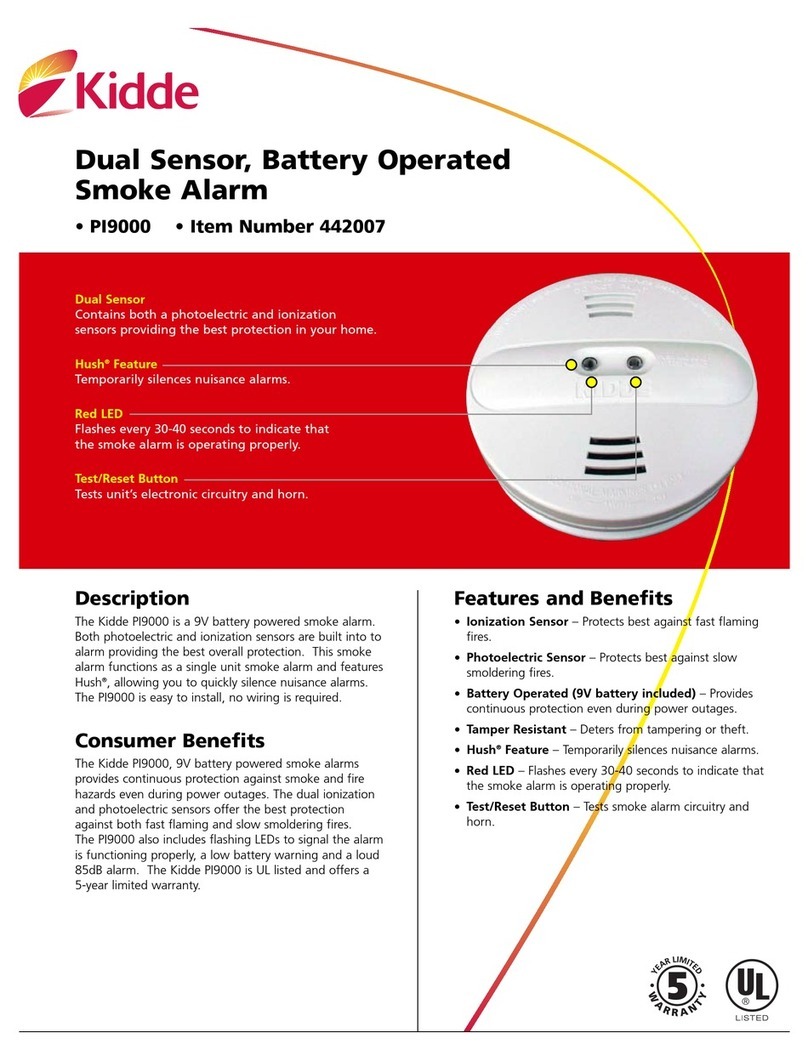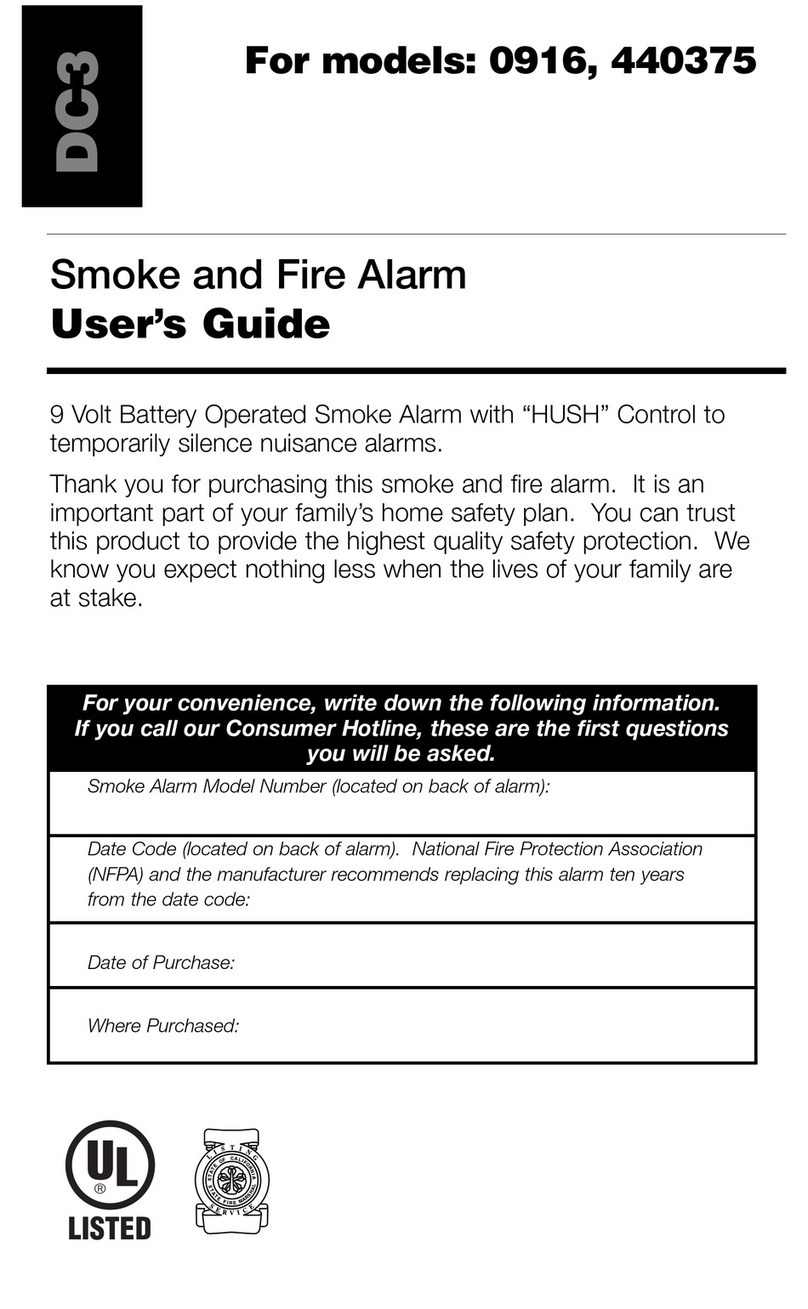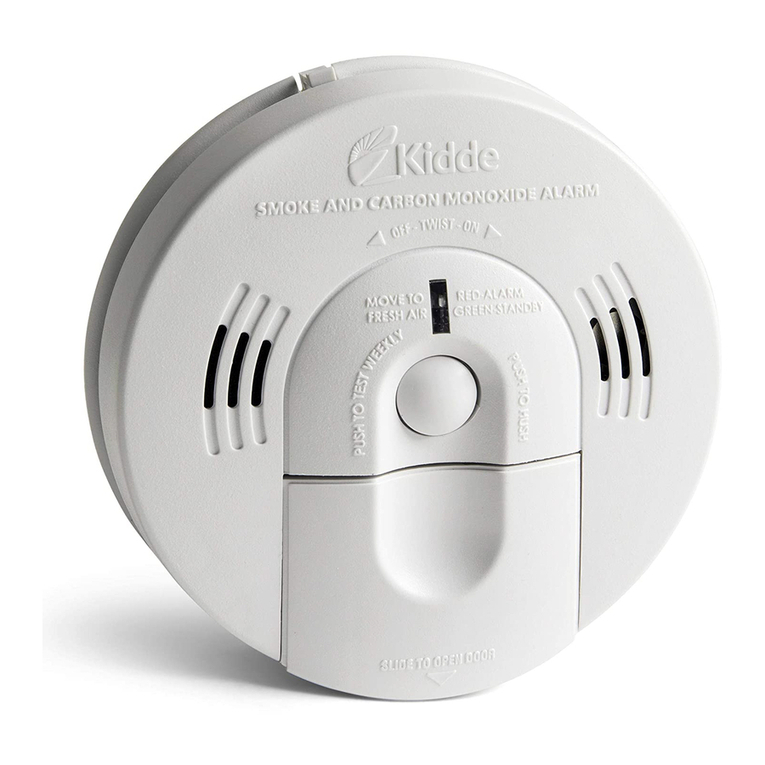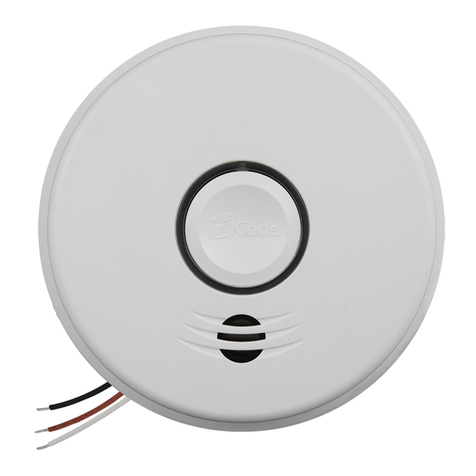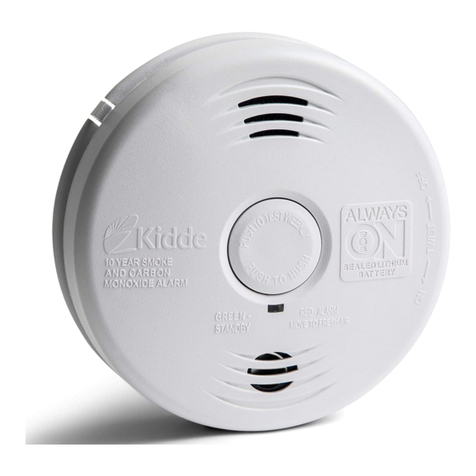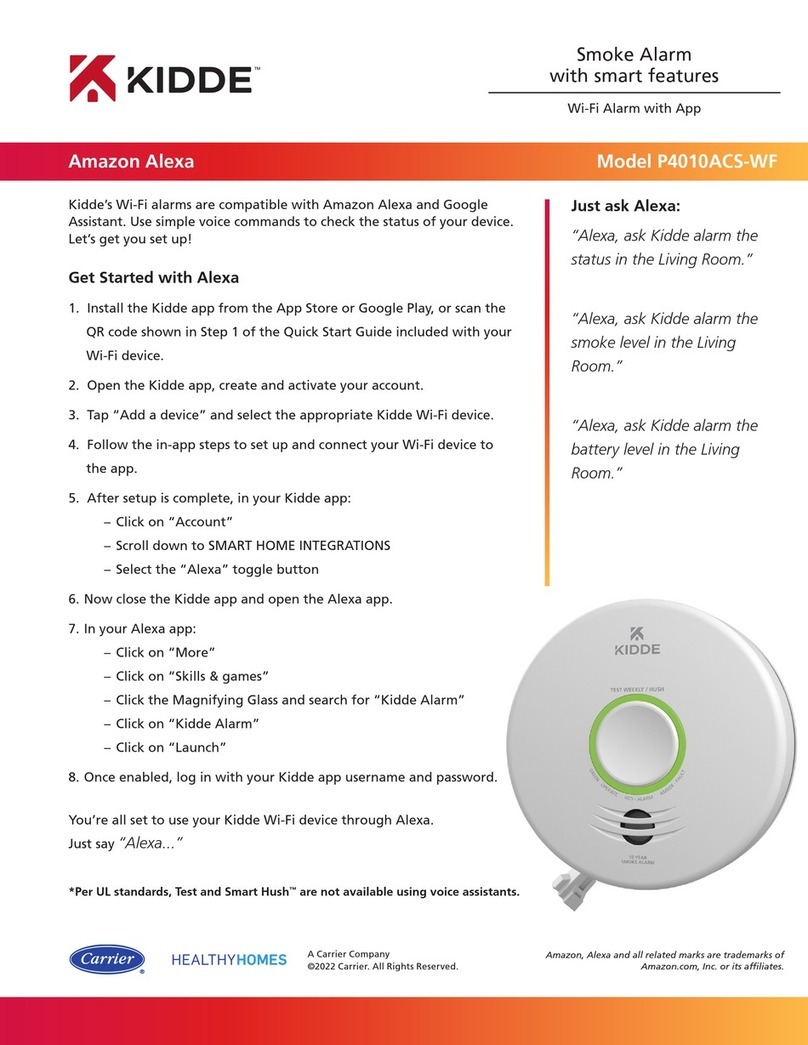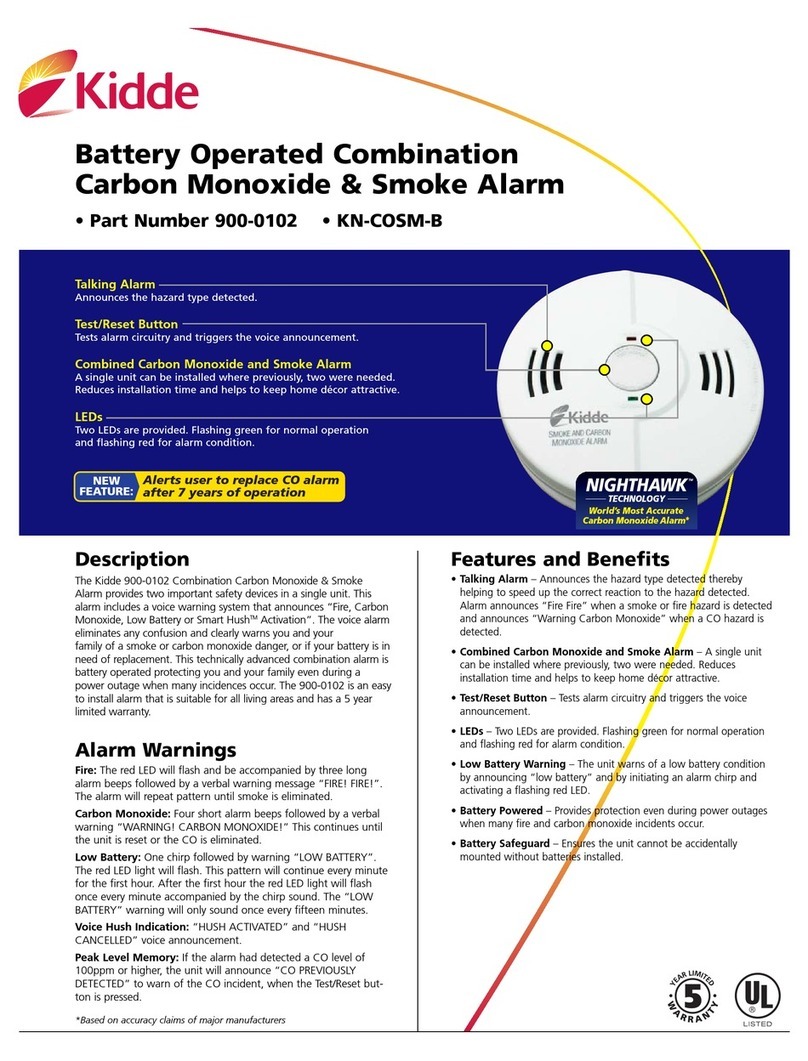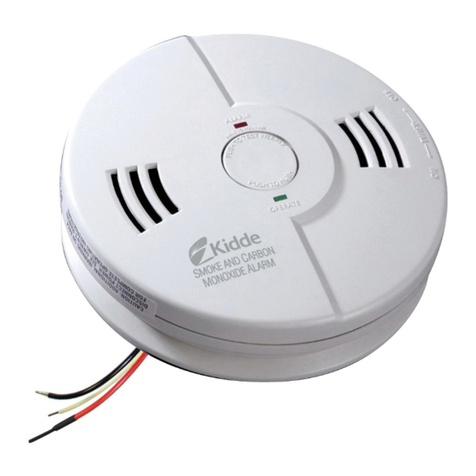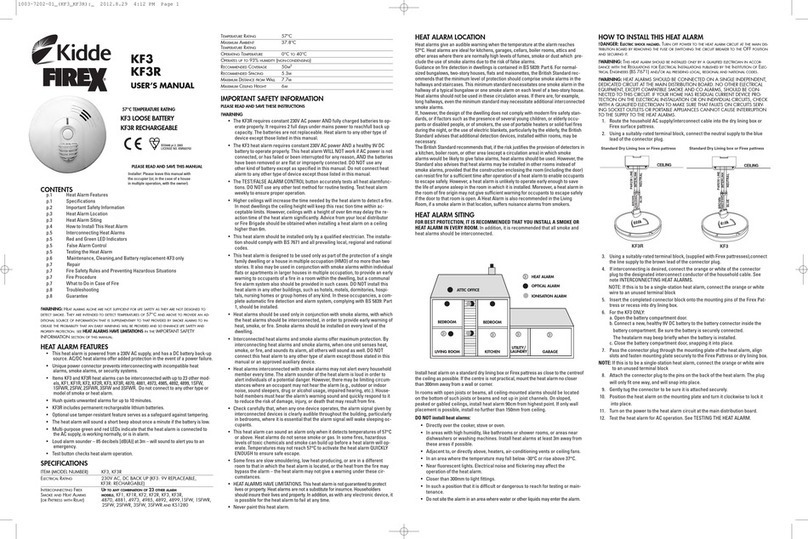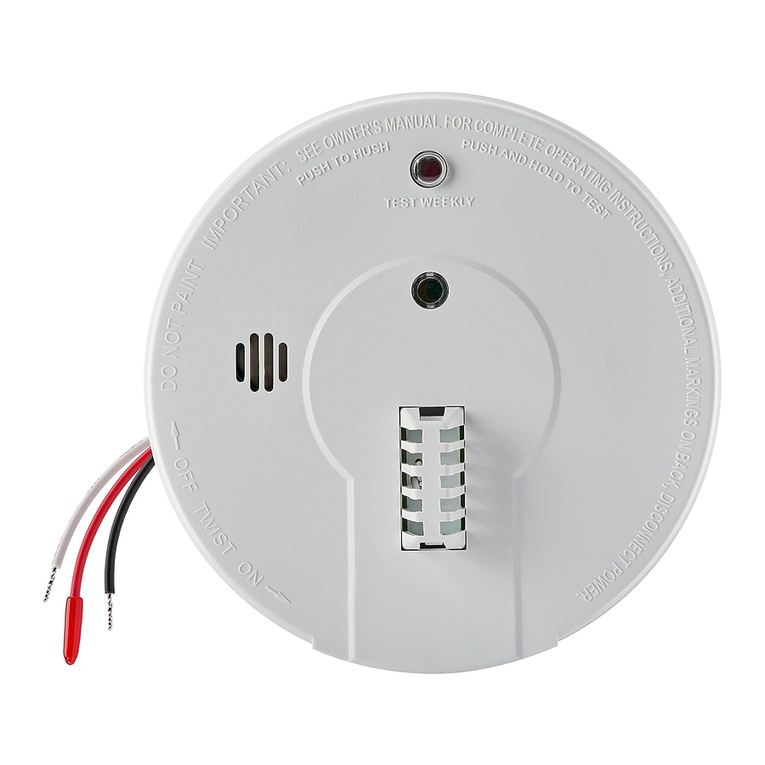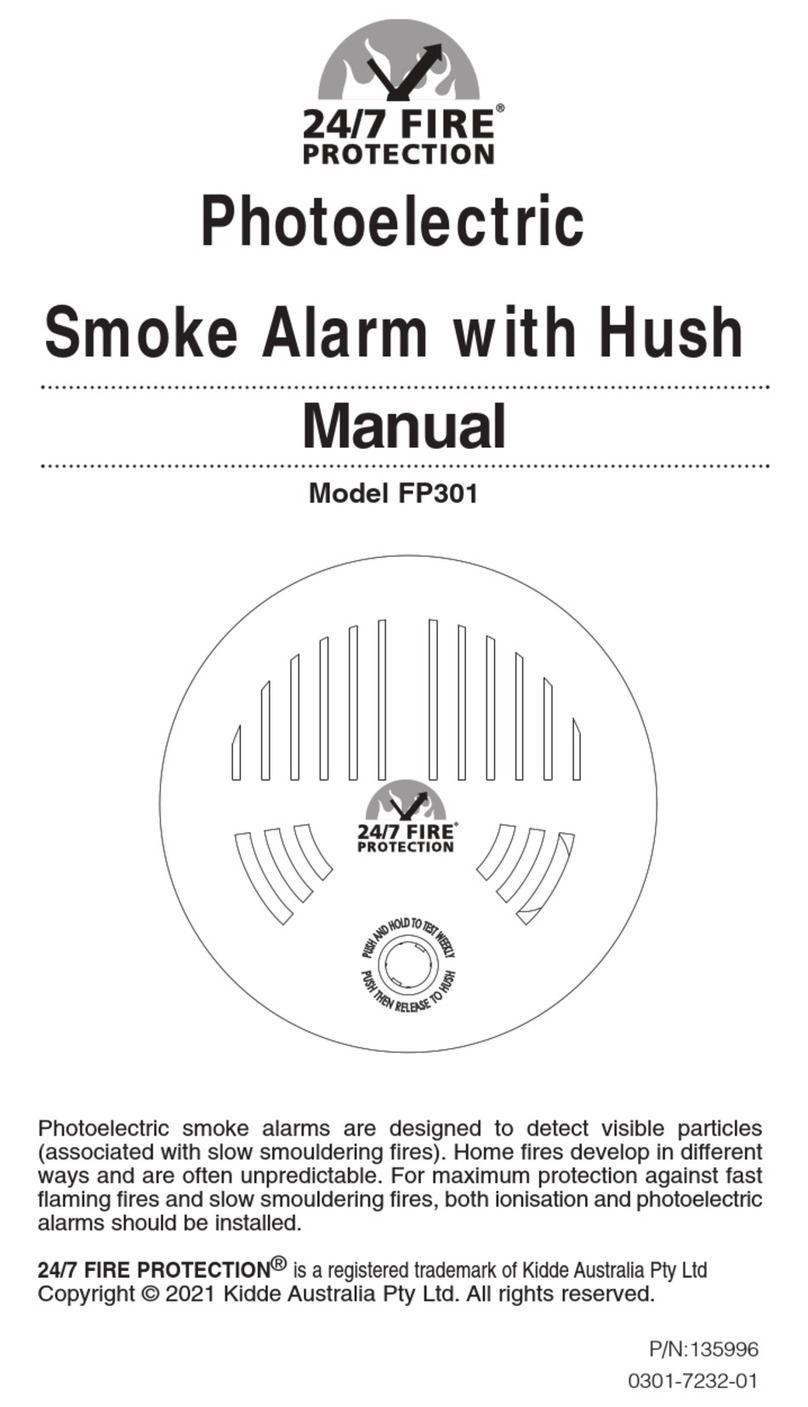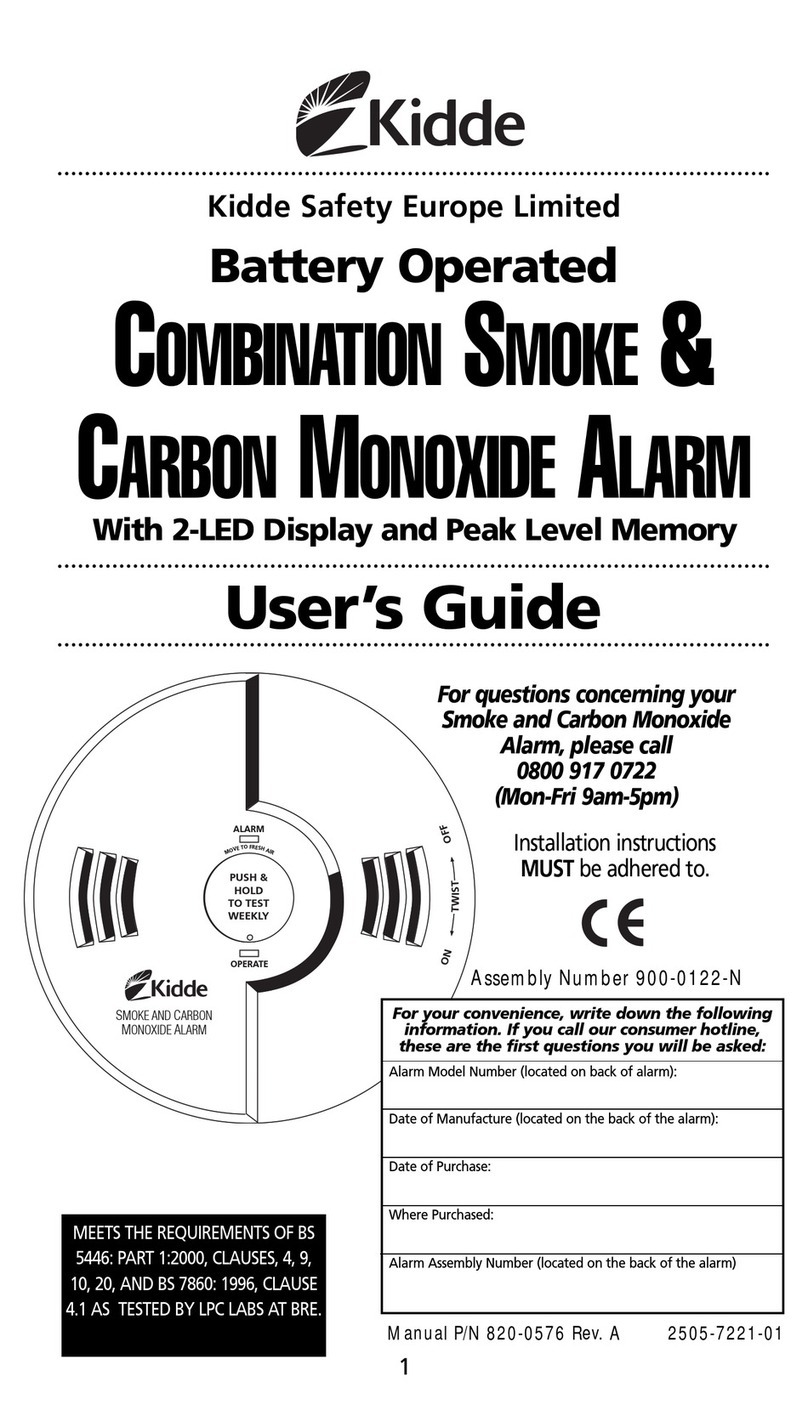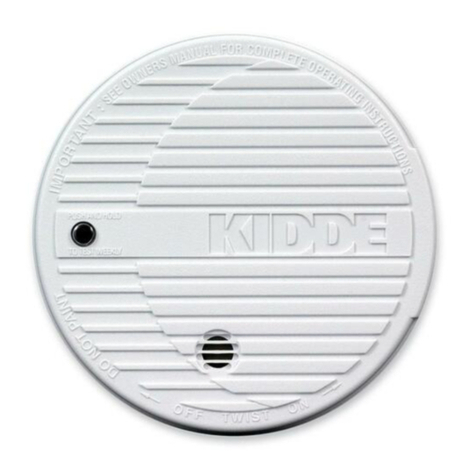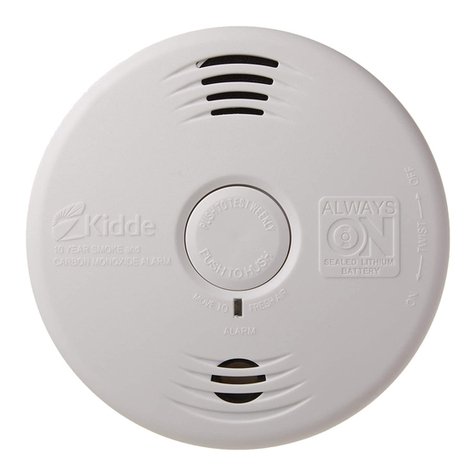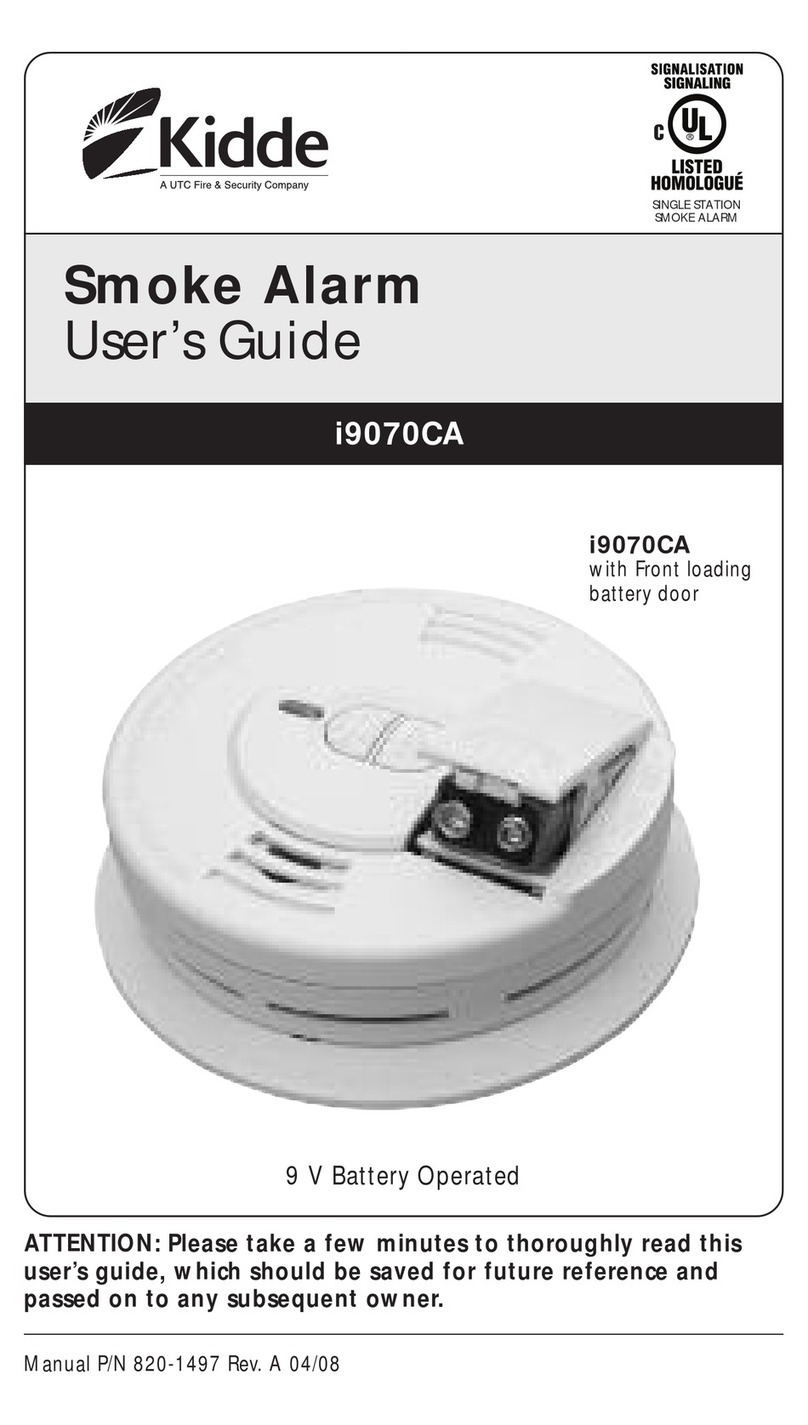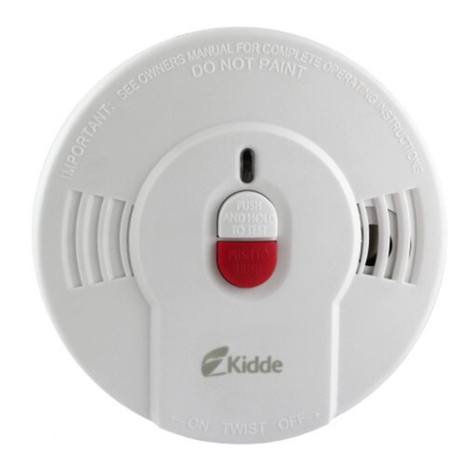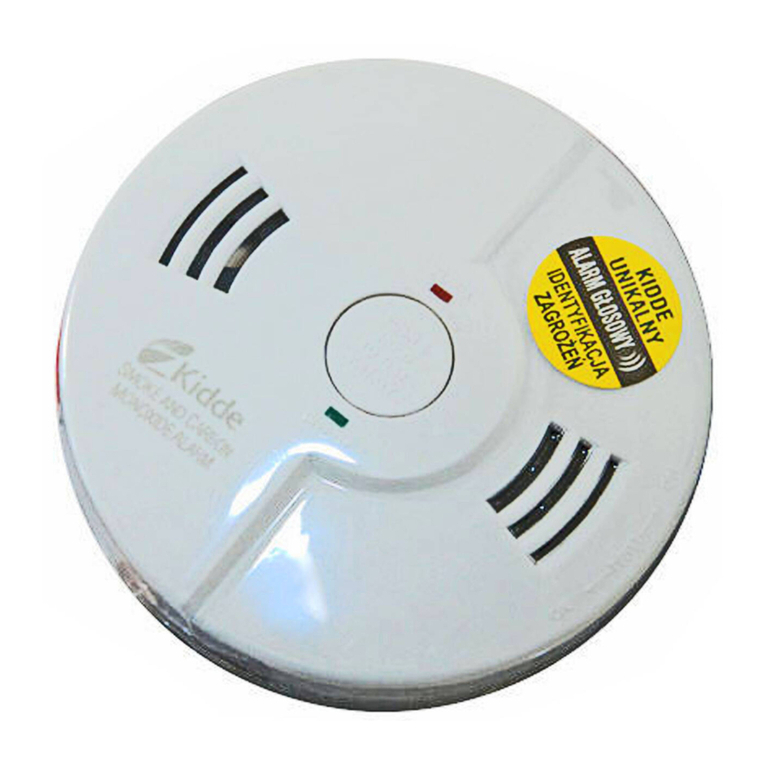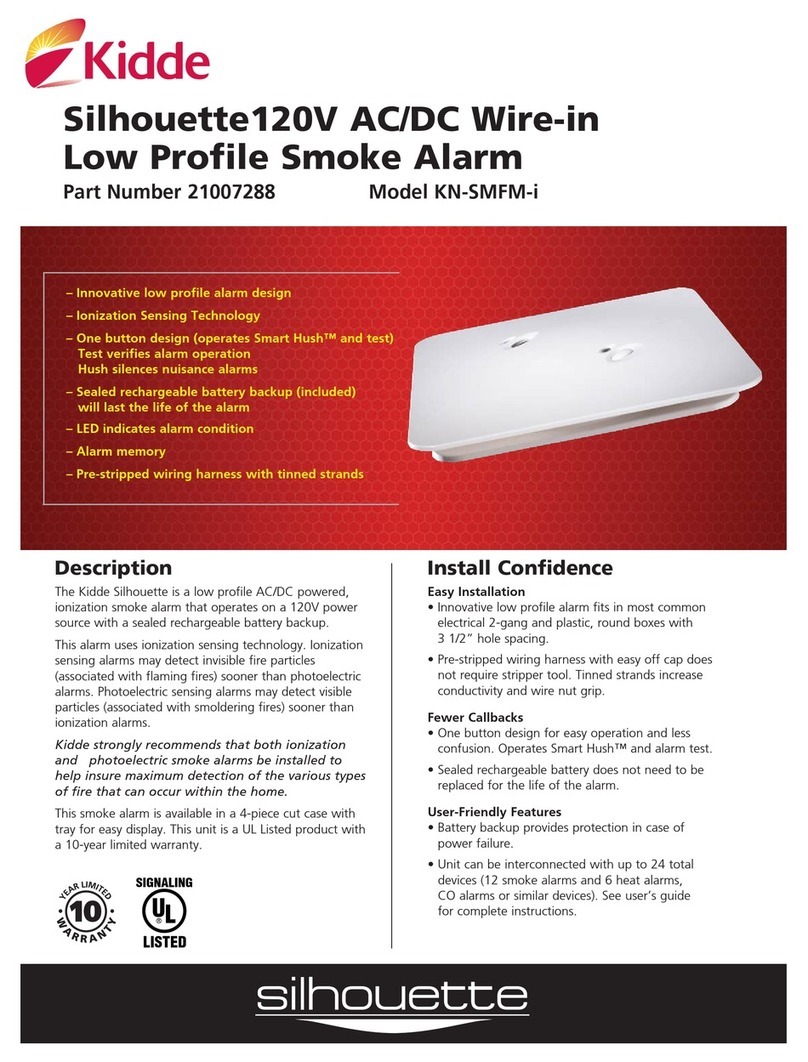
• A maximum of 24 Ki e an /or FireX evices may be interconnecte in a
multiple station arrangement. The interconnect system shoul not excee the
NFPA interconnect limit of 12 smoke alarms an /or 18 alarms total (smoke,
heat, carbon monoxi e, etc.). With 18 alarms interconnecte , it is still
possible to interconnect up to a total of 6 remote signaling evices an /or
relay mo ules.
• When mixing mo els which have battery backup (1275, 1276, 1285, i12040,
i12040A, i12060, i12060A, i12080, i12080A, i4618, i4618A, i4618AC,
i4718A, i4718AC, i5000A, i5000AC, PE120, P12040, Pi2000, Pi2010,
KN-COPE-I, KN-SM-FM-I, KN-COSM-IB, KN-COSM-IBA, HD135F, KN-COB-IC,
KN-COP-IC, i12010S, i12010SCO, RF-SM-ACDC) with mo els without battery
backup, (1235, i12020, i12020A, KN-COSM-I, SM120X, CO120X, SL177i,
SLED177i) be a vise that the mo els without battery backup will not respon
uring an AC power failure.
• For more information about compatible interconnect units an their
functionality in an interconnect system, visit our web site at: www.Ki e.com
• The maximum wire run istance between the first an last unit in an
interconnecte system is 1000 feet.
•NOTE: This alarm is not compatible with Ki e CO-relays an Strobes manu-
facture before Nov. 1, 2011.
• Figure 5 illustrates interconnection wiring. Improper connection will result in
amage to the alarm, failure to operate, or a shock hazar .
• Make certain alarms are wire to a continuous (non-switche ) power line.
NOTE: Use stan ar UL liste househol wire (as require by local co es) avail-
able at all electrical supply stores an most har ware stores.
FIGURE 5 INTERCONNECT WIRING DIAGRAM
WIRES ON ALARM HARNESS CONNECTED TO
Black Hot Si e of A.C. Line
White Neutral Si e of A.C. Line
Re Interconnect Lines (Re Wires) of Other
Units in the Multiple Station Set up
FUSE OR CIRCUIT BREAKER
REDBLACK
WHITE
CONNECTOR
First
Alarm
Additional
Alarm
Kidde
Relay Module
SM120X
Optional Accessory
BLACK
WHITE
RED
CONNECTOR
Additional
Alarm
1261-7205-00_V3.qxd:_ 2016.7.29 2:43 PM Page 7
